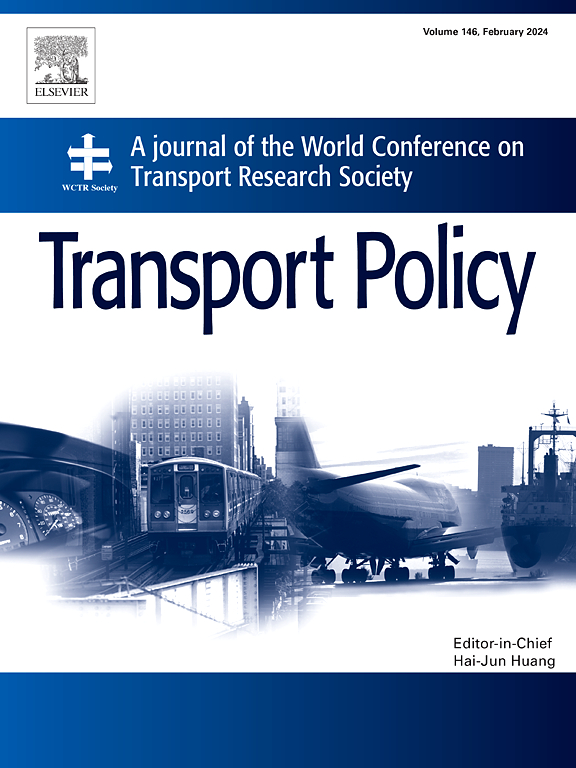空铁竞争背景下中长途城际旅客出行选择行为研究
IF 6.3
2区 工程技术
Q1 ECONOMICS
引用次数: 0
摘要
在竞争激烈的中长途客运市场环境下,提高旅客选择航空旅行的意愿和市场份额是航空公司面临的重要问题。本文以航空和高铁为研究对象,建立了考虑城际交通换乘和网络信息的旅客出行选择行为模型。基于对天津地区乘客的调查,采用偏最小二乘结构方程模型和必要条件分析,发现两种出行方式的感知有形性、感知惯性、感知舒适、感知便利、感知安全性和感知可靠性对感知价值有正向影响。感知价值显著影响满意度,而满意度和时间感知价值均显著影响旅行行为意愿。网络信息引导在满意度与旅游行为意愿之间起调节作用。转移效率对出行选择行为的调节作用仅在航空出行中显著。感知有形性、感知惯性、感知舒适、感知价值和满意度是航空旅行旅行行为意愿的必要条件,而感知舒适和感知价值是高铁旅行行为意愿的必要条件。研究结果有助于了解航空旅客出行选择行为的影响因素,为优化航空服务和制定有针对性的市场策略提供重要参考。本文章由计算机程序翻译,如有差异,请以英文原文为准。
Study on travel choice behavior of medium and long distance intercity passengers in the context of air-rail competition
In the highly competitive environment of medium and long distance passenger transport market, enhancing passengers' willingness to choose air travel and market share is an important issue for airlines. This paper establishes a passenger travel choice behavior model that considers transfers between urban and intercity transportation as well as network information, focusing on air and high-speed rail. Based on the survey of passengers in Tianjin, partial least squares structural equation model and necessary condition analysis is employed to show that perceived tangibility, perceived inertia, perceived comfort, perceived convenience, perceived safety and perceived reliability of two travel modes have a positive effect on perceived value. Perceived value significantly influences satisfaction, while both satisfaction and perceived value of time significantly affect travel behavior intention. Network information guidance plays a moderating role between satisfaction and travel behavior intention. The moderating effect of transfer efficiency on travel choice behavior is only significant in air travel. Perceived tangibility, perceived inertia, perceived comfort, perceived value and satisfaction are the necessary conditions of travel behavior intention in air travel, while perceived comfort and perceived value are the necessary conditions of travel behavior intention in high-speed rail travel. Those findings are helpful to understand factors affecting travel choice behavior of air passengers, and provide important references for optimizing air services and formulating targeted market strategies.
求助全文
通过发布文献求助,成功后即可免费获取论文全文。
去求助
来源期刊

Transport Policy
Multiple-
CiteScore
12.10
自引率
10.30%
发文量
282
期刊介绍:
Transport Policy is an international journal aimed at bridging the gap between theory and practice in transport. Its subject areas reflect the concerns of policymakers in government, industry, voluntary organisations and the public at large, providing independent, original and rigorous analysis to understand how policy decisions have been taken, monitor their effects, and suggest how they may be improved. The journal treats the transport sector comprehensively, and in the context of other sectors including energy, housing, industry and planning. All modes are covered: land, sea and air; road and rail; public and private; motorised and non-motorised; passenger and freight.
 求助内容:
求助内容: 应助结果提醒方式:
应助结果提醒方式:


